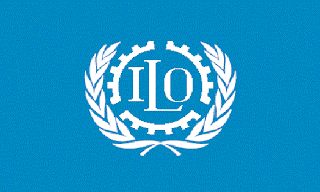Source: UN Information Centre, Accra
Measures such as cash transfers or health insurance programmes can sometimes determine whether a child spends the day studying and playing, or working and being deprived of a fair chance at a decent future.
A report by the ILO’s International Programme on the Elimination of Child Labour (IPEC), says that social protection policies can play a key role in the fight against child labour, which currently affects some 215 million children worldwide.
The World Report on Child Labour: Economic vulnerability, social protection and the fight against child labour, is a new ILO study which reviews relevant research on how different types of social protection measures can help combat child labour. These include cash transfer schemes, social health protection and income security in old age.
Brazil’s Bolsa Escola cash transfer programme (later renamed Bolsa Familia), for example – which pays families a certain amount per month provided their children go to school – led to a drop of nearly 9 per cent in child labour in rural areas. The drop was 2.5 per cent in urban areas.
In Cambodia, child labour was down by ten per cent following the introduction of the Education Sector Support Project scholarship programme – which also involves cash transfers.
The report, which is the first in a series, cites a study in Guatemala showing that children from households where at least one member is covered by health insurance are about 4.5 per cent less likely to work.
Income in old age was also analysed by the authors: In Botswana, Malawi, Namibia, South Africa, Tanzania and Zimbabwe, for instance, 50-60 per cent of orphans live with their grandparents. In such households, the degree of income security in old age plays a significant role in limiting child labour.
“This report contributes to a better understanding of the underlying economic and social vulnerabilities that generate child labour,” said Constance Thomas, IPEC Director.
“It clearly shows that investing in social protection through nationally-defined social protection floors is a crucial part of the response in the fight against child labour, which also includes access to decent jobs for adults and education for children.”
According to ILO estimates, more than 5 billion people – about 75 per cent of the global population – do not have effective access to comprehensive social protection.
The report says that extending social protection in line with the ILO Recommendation on social protection floors, adopted less than a year ago, should be a key part of national strategies to tackle child labour.
National social protection floors should include at least a basic level of income security throughout the life cycle, as well as access to essential health care.
The authors also recommend introducing child labour-specific measures in social security systems, strengthening national legal frameworks and capacity, as well as reaching out to vulnerable groups of children such as those living with HIV, migrant children, children from marginalised ethnic minorities, indigenous and other economically and socially excluded groups.
Background Box
The 2010 Hague Global Child Labour Conference adopted a Roadmap for the Elimination of the Worst Forms of Child Labour by 2016.
The Roadmap called for a series of World Reports which are intended to address important thematic issues for policy makers to consider, in developing strategies to tackle child labour.
This new report is the first in a series of studies leading up to 2016. It is being launched just six months before the follow-up International Conference on Child labour, which will be held in Brazil in October 2013.



No comments:
Post a Comment